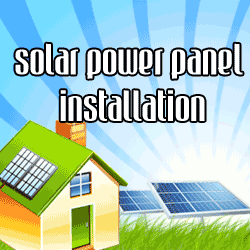
Aircraft designers have relied on aluminium for manufacturing aeroplanes for over 60 years, ever since this strong lightweight material was first discovered as a natural metal occurring in bauxite.
This was a huge improvement beyond the plywood, string and canvass that was used before and was essential for developing todays modern jets and the long flying distances we all enjoy today. This requires flying above 30,000 feet which needs a strong, light construction to withstand the pressure differences at such high altitudes.
For the past 30 years aluminium has also been used extensively in the design and manufacture of window frames in the UK Commercial market due, also, to its strength and lightness.
However, no matter how good and reliable any material or product is, there is always the possibility that one day, superior technology will move it aside and create something even better to come along and completely supersede it.
This is already happening, today. In the aircraft industry, Boeing's 787, so called 'Dream-liner' was the first to break tradition and turn towards innovative new technology that not only matches what aluminium can offer - but which goes some way beyond in terms of strength, durability, lightness and rigidity - and avoids the future possibility of metal fatigue.
'Fibre Reinforced Polymer' (FRP) is the generic term for high performance, light weight compounds which combine reinforcing fibres of glass or carbon into a tough and durable thermosetting resin, to generate composite materials of astonishing strength and capability.
Already used as the heat resisting nose cone on the NASA Space Shuttle, these FRPs are significantly stronger than steel, weight for weight and are often known by such names as GRP, fibreglass, carbon fibre and graphite. We are more familiar with them as the best material for producing golf clubs, tennis and squash racquets, fishing rods, motor cycle fairings, Formula 1 car bodies and disc brakes, Olympic vaulting poles - the list goes on.
According to Russell Maguire, Boeing's Technical Vice President, the new 787 will have 94% of its wings and fuselage made entirely from FRP composites, which will provide a lightweight one piece moulded body shell, thus no joints or rivets to deteriorate - and creating a lighter, more fuel efficient aircraft, generating lower carbon emissions and thus achieving a more environmentally friendly flying experience - helping Boeing to meet its corporate responsibility towards climate change.
Something similar is happening in the window industry. Climate change is heavily influencing the fate of aluminium in the UK Building Industry, too. Commercial windows in offices, schools, high-rise tower blocks, hospitals, care homes, etc, have predominantly used aluminium for 30 years, simply because no other material has been strong enough or suitable for these architecturally designed projects - until now.
As in the aircraft industry, FRP (pultruded GRP Fibreglass) has been found to be far better qualified than aluminium for window manufacture, due to its higher strength, durability and thermal insulation, which leaves aluminium floundering in its wake when chasing lower thermal U values and higher sustainability targets for some of our more challenging BREEAM projects. (BREEAM: UK Government inspired
sustainable building standards to achieve higher environmental levels of construction - and lower carbon emissions when in use. Building Research Establishment, Environmental Assessment Model).
The advantages of GRP Fibreglass over aluminium don't stop there, either! The following list summarises some of the additional benefits:-
* Service life of 50 - 75 years is double that for aluminium * Thermal U values of 0.9 W/M2K are half aluminium's best (1.8) * GRP needs no surface protection, essential for aluminium to prevent corrosion in weather and coastal sea spray. * Both materials are supplied coated in any colour with a 25 year life * Aluminium can't be repaired/re-coated so poor appearance eventually demands replacement. Scratches and damage can hasten that end. * GRP can be repaired/re-coated any time, in any colour, providing another 25 years and requiring zero maintenance. * GRP cannot be bent or deformed like the soft metal of aluminium * GRP has negligible expansion even at high temperature. Aluminium is the opposite. * GRP carbonises in fire, protecting its structural integrity. Aluminium melts at 660C. * Despite the many benefits of GRP over aluminium - GRP gives better price and value.
So, no matter how good and reliable aluminium once was, there has come the day when superior technology is moving it aside, having created something even better to completely supersede it.
About the Author
Chris Dixon has spent 25 years pioneering GRP building products and is now a freelance Business Consultant working with Pultec Ltd, UK market leader of GRP Windows. Find out more about this new material, it's environmental credentials, and how it could improve the sustainability of your project, at =>
http://www.pultec.co.uk Chris can be contacted at ' cjd_home@hotmail.com



















